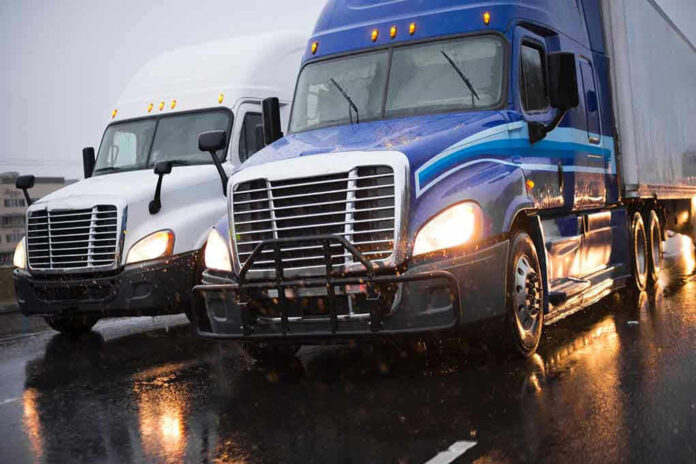Imagine a world where trucks drive themselves, solving one of America’s biggest logistical headaches—but what happens to the truckers?
At a Glance
- The U.S. faces a severe shortage of truck drivers with a gap projected to exceed 160,000 by 2030.
- Automation, spearheaded by companies like Gatik, is being explored as a solution.
- Autonomous trucks are not a complete replacement but a supplement to human drivers.
- The adoption of self-driving trucks will bring significant economic, social, and regulatory changes.
The Trucking Industry’s Uphill Battle
The U.S. trucking industry, which is responsible for moving over 72% of the nation’s freight, is experiencing a significant driver shortage. This gap, already at an alarming 60,000 to 80,000 unfilled positions, could soar to over 160,000 by 2030. The shortage is driven by an aging workforce, high turnover rates, and restrictive interstate driving regulations that limit younger drivers from entering the field. These factors are leaving trucking companies scrambling for solutions.
The rise of e-commerce has exacerbated the demand for freight, further complicating the industry’s woes. Additionally, the COVID-19 pandemic accelerated retirements and disrupted training pipelines, compounding the shortage. While past attempts to address these issues through wage increases and recruitment campaigns have seen limited success, a new player has entered the field—automation.
Automation: Hope or Hype?
Enter Gatik, a company at the forefront of deploying autonomous trucks to mitigate the trucking shortage. Operating over 100 autonomous trucks across Texas, Arkansas, and Canada, Gatik is rapidly expanding its fleet. The company’s CEO, Gautam Narang, believes that automation is the only viable long-term solution to the driver shortage. However, the American Trucking Associations (ATA) maintains that autonomous vehicles should be viewed as a supplement to, rather than a replacement for, human drivers, especially for long-haul routes.
While autonomous vehicles promise to revolutionize logistics, their deployment remains limited and closely monitored for safety. The trucking industry remains cautiously optimistic, projecting some improvement but no rapid influx of new drivers by 2025. This transition will likely be gradual, with automation handling routine or long-haul routes, leaving complex or local deliveries to human drivers.
The Ripple Effects of Automation
The shift towards autonomous trucking will have far-reaching implications for the industry and beyond. In the short term, supply chain disruptions and increased costs for shippers and consumers are expected to continue. Existing drivers will face pressure on wages and working conditions, while the gradual adoption of self-driving trucks occurs in controlled environments. Long-term, the trucking workforce could transform, with automation taking over routine tasks and human roles evolving towards fleet management and safety oversight.
The potential reduction in job opportunities for traditional drivers could be offset by new roles in tech support and fleet management. However, regulatory and safety challenges loom as autonomous vehicles scale up. The transition could also spark political debates over automation, labor rights, and regulatory standards, with social concerns about job displacement and safety taking center stage.
Experts Weigh In
Industry experts offer diverse perspectives on the future of trucking. The ATA views autonomous vehicles as a supplement, not a replacement, for drivers. Gatik’s CEO champions automation as essential for long-term viability and cost control. Meanwhile, analysts question whether the shortage results from a true labor gap or poor industry retention practices. Labor advocates caution against potential job losses, urging investment in retraining and worker protections.
Data from the ATA and other credible sources consistently highlight the scale and persistence of the driver shortage. While technology companies like Gatik present ambitious plans, their deployment remains in early stages. The consensus among industry and experts underscores the need for workforce development and technological innovation to address the challenge effectively.











